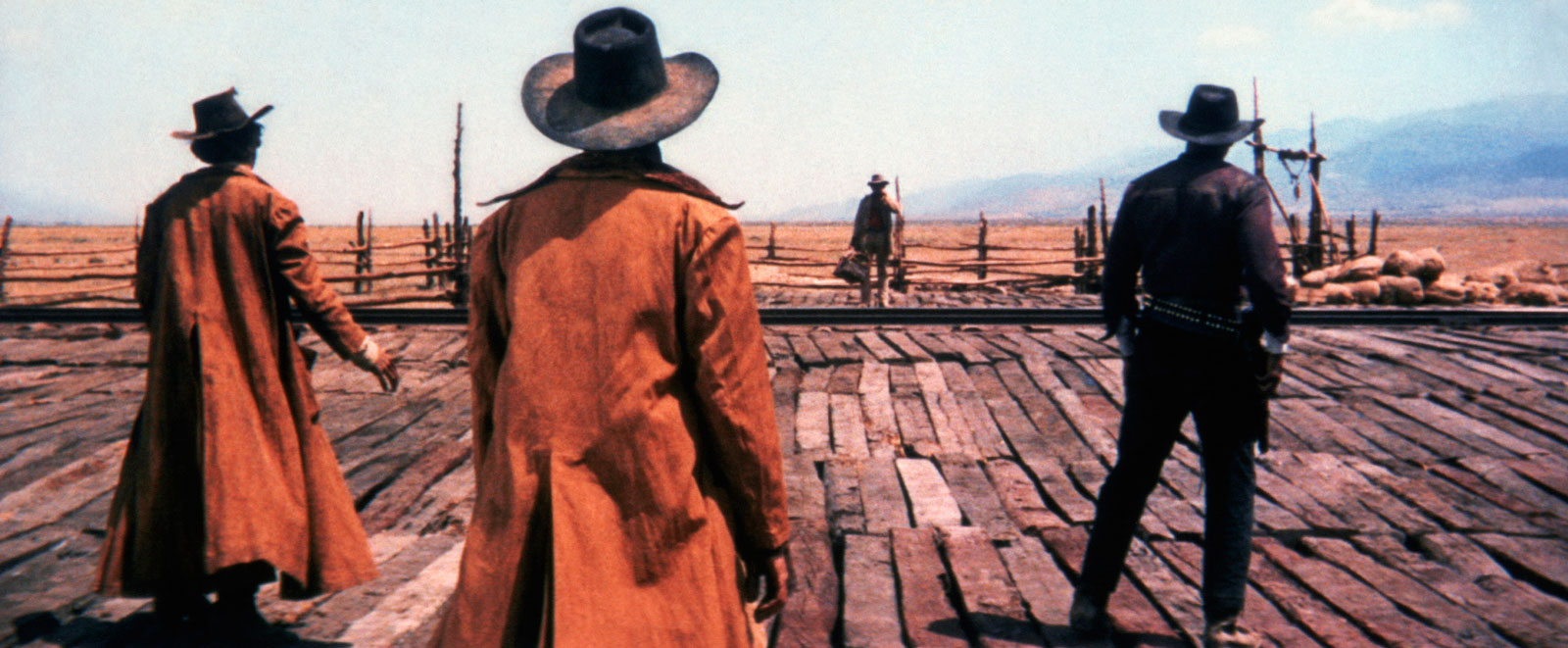But I've been reflecting on how the default assumptions about setting and the way that the fantasy world works owe far more to American Westerns than to other genres, despite all the swords and wizards painted on the outside.
Consider:
- wandering heroes who roam town to town, helping the locals and righting wrongs
- frontier-style wilderness implied in modules B1, B2, B5 and elsewhere (parts of module N1, Against the Cult of the Reptile God read almost like something from Laura Ingalls Wilder)
- a complete absence of social class in which a man is as good as his sword arm and the PCs can apparently travel wherever they wish, bearing arms, without question
- the notion of smooth upward mobility through developed skill and the acquisition of wealth, regardless of birth
- assumed capitalism (xp is mainly gained from treasure, so wealth acquisition rather than birth, fulfillment of duty, or spiritual enlightenment is the way that one advances in the fantasy world)
- things usually start in the saloon ... I mean "tavern" ... rather than in a lord's feasting hall, in the market square, or the napse of a cathedral
None of these elements are unique to Westerns of course, but they form a constellation that has more in common with Gunsmoke or The High Chaparral than Le Morte d'Arthur.
Strictly defined social classes and the ubiquity of the Roman Catholic Church are arguably the two most defining elements of Western Europe in the middle ages, but both are essentially absent from the default D&D setting.
Strictly defined social classes and the ubiquity of the Roman Catholic Church are arguably the two most defining elements of Western Europe in the middle ages, but both are essentially absent from the default D&D setting.
Here are the four ideas I had for fitting D&D, with all that is implied by its systems, into something a bit more like the middle ages:
- The Tradesmen. Dungeon crawling, it turns out, is a trade and the explorers are craftsmen of a sort. Rather like expert cobblers, bakers, or tailors, one learns at the knee of his ol' da ("Ye've got to carry a pole lad ... no, not a six footer, tha will'na do! She's got to be ten feet if she's an inch! Why? It's tradition boy!") and carries on the family trade. Sure, it's a distasteful, dangerous, and somewhat disreputable trade, but quite necessary for the economy of the medieval landscape. Afterall, how are lords to pay for all those wars if it wasn't for adventurers dragging cartloads of gold up from Pluto's vaults deep beneath the earth? Spain could hardly have become the powerful empire that it is today had The Vault of the Drow not been claimed (and looted) in the names of Ferdinand and Isabella.
- The Mercenary Company. The Italian duke can hardly trust his own kin, so when he needs someone to fetch the magic maguffin it falls to these free men-at-arms (condottierre). Of course, mercenaries have the nasty habit of destabilizing the land that hosts them (and looting the peasantry at every opportunity), so once the job is done the lord will be eager to see the back of them.
- The Ecclesiastic Order. Dungeoneers are a branch of the Catholic Church and each explorer has taken holy vows (completely apart from any personal feelings of piety or indeed, in the case of elves, whether he or she actually even has a soul). They perform quests and descend into dungeons at the will of the Archbishop, whether to do good deeds or to enrich the coffers of the Church and so extend its influence in the temporal sphere.

- The Retinue. German Prince Frederick calls the shots and the player characters are his retainers and lackeys. If the he decides to go into the caverns and face the wyrm that sleeps there, then the PCs are sworn, bound, and beholden to come along in his train. Many of the broader campaign choices center on the decisions of this high level NPC, but it's up to the characters to keep their meal ticket alive and happy.
 I'm kind of curious why this last model didn't really appear much from the start of the hobby.
I'm kind of curious why this last model didn't really appear much from the start of the hobby. Having a more powerful and more experienced NPC "commander" ... a knight, bishop, or wizard ... seems like a natural way to ease new players into understanding the setting and making their first fumbling steps without a TPK. It also provides an instant bond between characters which far surpasses, "you meet some strangers in a tavern ..."
Battles and encounters need not see the players relegated to a passive role either. While Lady Torr battles the hill giant, the 1st level PCs deal with its goblin slaves ... that type of thing.
The Hobbit certainly set a precedent for how this sort of arrangement could work. As the PCs (and players) grow in skill, they can go from supporting their lord to acting as her agents, rescuing her from threats, and eventually becoming her peer.
Has anyone seen or used this "retinue style" in play or print?


No comments:
Post a Comment